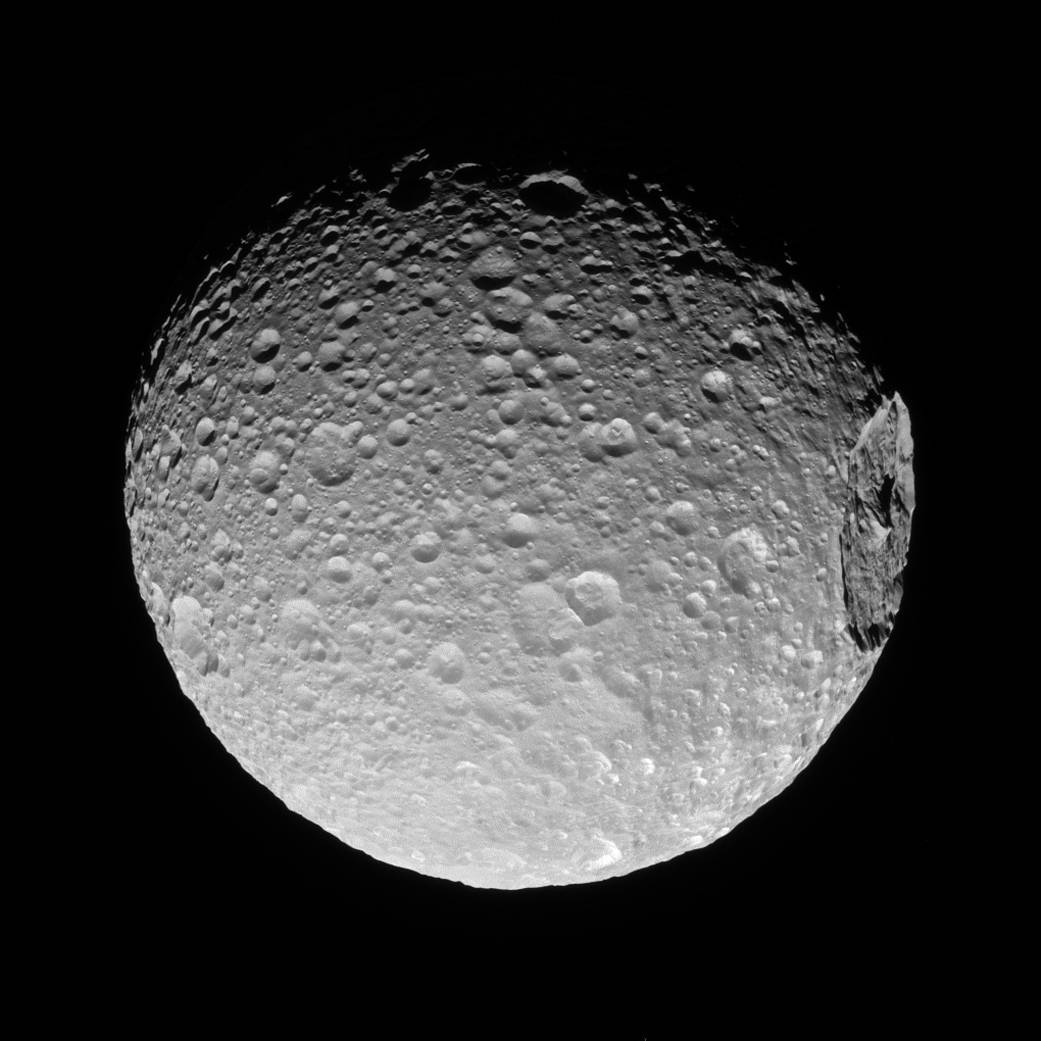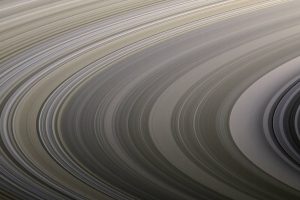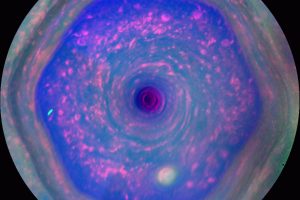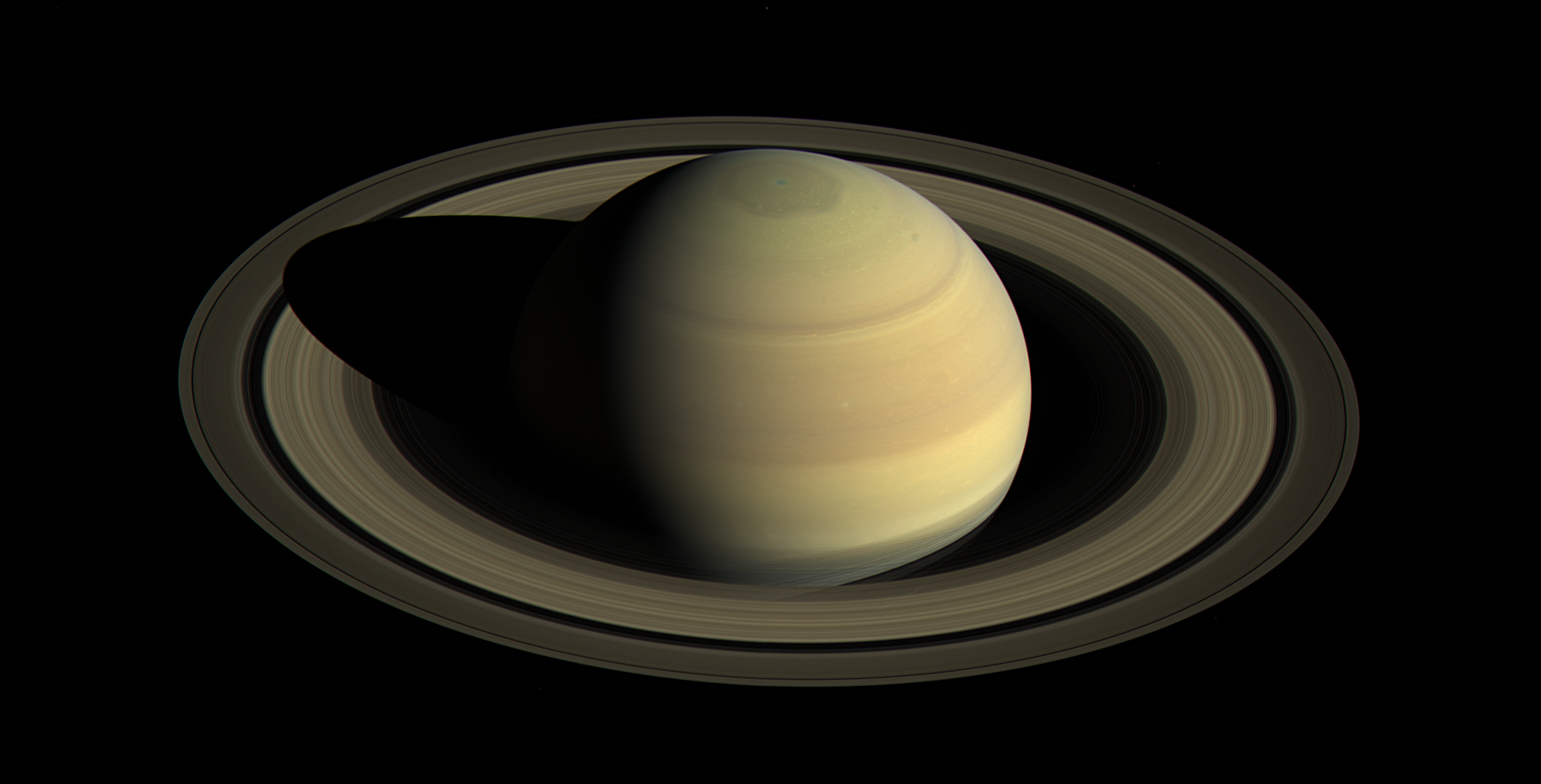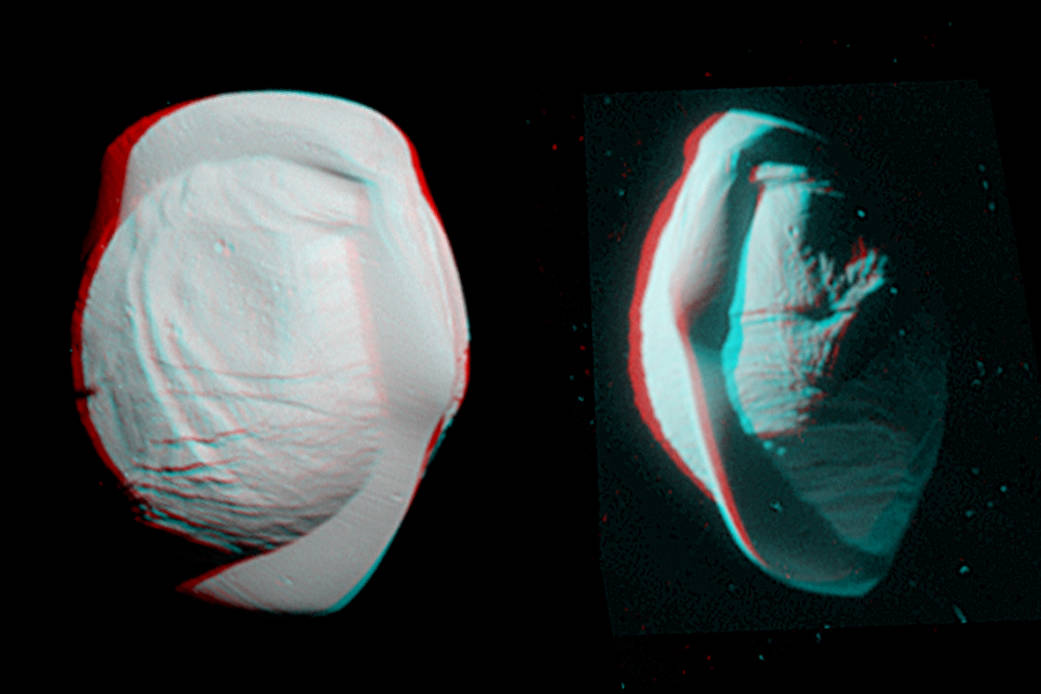オリジナル記事:The Big One
Mimas’ gigantic crater Herschel lies near the moon’s limb in this Cassini view.
カッシーニが撮影した衛星の画像の端に突き出たように見えるのが巨大なハーシェルクレーターです。
A big enough impact could potentially break up a moon. Luckily for Mimas, whatever created Herschel was not quite big enough to cause that level of disruption.
大きな衝撃が加わることで衛星は破壊されてしまいます。土星の衛星ミマスにとって幸いだったことに、ハーシェルクレーターを作った衝撃はそこまで大きなものではありませんでした。
When large impacts happen, they deliver tremendous amounts of energy — sometimes enough to cause global destruction. Even impacts that are not catastrophic can leave enormous, near-permanent scars on bodies like Mimas (246 miles or 396 kilometers across).
大きな衝撃が加わると、時として天体を破壊してしまうほどのとてつもないエネルギーが放射されます。壊滅的な衝撃とまでは至らなくとも、ミマス(直径246マイル/396キロメートル)くらいの天体ではほぼ永久に残る傷跡を刻むことになります。
This view looks toward the anti-Saturn hemisphere of Mimas. North on Mimas is up and rotated 32 degrees to the left. The image was taken in visible light with the Cassini spacecraft narrow-angle camera on Nov. 19, 2016.
この画像は土星の反対側に向いているミマスの半球です。このミマスの画像の上の方が北の方角で32度左に回転しています。この画像は2016年11月19日に土星探査機カッシーニに搭載している狭角カメラにより可視光で撮影されました。
The view was acquired at a distance of approximately 53,000 miles (85,000 kilometers) from Mimas. Image scale is 1,677 feet (511 meters) per pixel.
この画像はミマスからおよそ53,000マイル(85,000キロメートル)の距離で撮影されました。画像解像度は1ピクセルあたり1,677フィート(511メートル)です。
The Cassini mission is a cooperative project of NASA, ESA (the European Space Agency) and the Italian Space Agency. The Jet Propulsion Laboratory, a division of the California Institute of Technology in Pasadena, manages the mission for NASA’s Science Mission Directorate, Washington. The Cassini orbiter and its two onboard cameras were designed, developed and assembled at JPL. The imaging operations center is based at the Space Science Institute in Boulder, Colorado.
The Cassini mission is a cooperative project of NASA, ESA (the European Space Agency) and the Italian Space Agency. The Jet Propulsion Laboratory, a division of the California Institute of Technology in Pasadena, manages the mission for NASA’s Science Mission Directorate, Washington. The Cassini orbiter and its two onboard cameras were designed, developed and assembled at JPL. The imaging operations center is based at the Space Science Institute in Boulder, Colorado.
For more information about the Cassini-Huygens mission visit https://saturn.jpl.nasa.gov and http://www.nasa.gov/cassini . The Cassini imaging team homepage is at http://ciclops.org .
Credit: NASA/JPL-Caltech/Space Science Institute
Last Updated: March 13, 2017
Editor: Tony Greicius
訳者注:
ハーシェル (ミマスのクレーター) – Wikipedia
https://ja.wikipedia.org/wiki/ハーシェル_(ミマスのクレーター)
ハーシェル (Herschel, [ˈhɜːrʃəl]) は、土星の衛星ミマスにある巨大な衝突クレーター。衛星ミマスを発見した18世紀の天文学者ウィリアム・ハーシェルにちなんで名づけられた。
太陽系内においてハーシェルは、自己重力によって静水圧平衡を維持している衛星に形成されたクレーターとしては、天体表面に占める面積の割合が最も大きいクレーターである。クレーターの直径はおよそ139キロメートルであり、ミマスの直径のほぼ3分の1に相当する。クレーター周壁の高さは約5キロメートル、底面の深さは10キロメートル。クレーターの中央丘の高さは底面から6キロメートルである。
